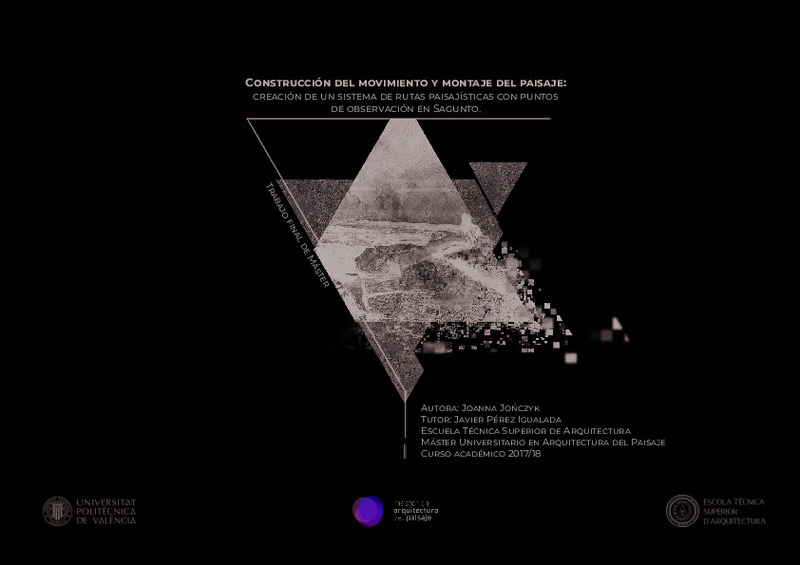JavaScript is disabled for your browser. Some features of this site may not work without it.
Buscar en RiuNet
Listar
Mi cuenta
Estadísticas
Ayuda RiuNet
Admin. UPV
Construcción del movimiento y montaje del paisaje: creación de un sistema de rutas paisajísticas con puntos de observación en Sagunto
Mostrar el registro completo del ítem
Jonczyk, JK. (2018). Construcción del movimiento y montaje del paisaje: creación de un sistema de rutas paisajísticas con puntos de observación en Sagunto. http://hdl.handle.net/10251/113326
Por favor, use este identificador para citar o enlazar este ítem: http://hdl.handle.net/10251/113326
Ficheros en el ítem
Metadatos del ítem
| Título: | Construcción del movimiento y montaje del paisaje: creación de un sistema de rutas paisajísticas con puntos de observación en Sagunto | |||
| Autor: | Jonczyk, Joanna Krystyna | |||
| Director(es): | ||||
| Fecha acto/lectura: |
|
|||
| Resumen: |
[ES] El presente Trabajo Fin de Máster se sitúa en la confluencia de dos campos temáticos convergentes. El primero es el trabajo con el paisaje y la ciudad desde el punto de vista del movimiento y, como consecuencia, el ...[+]
[EN] The present Master's Thesis is located at the confluence of two convergent thematic fields. The first one is the work with the landscape and the city from the point of view of the movement and, as a consequence, the ...[+]
|
|||
| Palabras clave: |
|
|||
| Derechos de uso: | Reserva de todos los derechos | |||
| Editorial: |
|
|||
| Titulación: |
|
|||
| Tipo: |
|
Localización
recommendations
Este ítem aparece en la(s) siguiente(s) colección(ones)
-
ETSA - Trabajos académicos [4687]
Escuela Técnica Superior de Arquitectura







